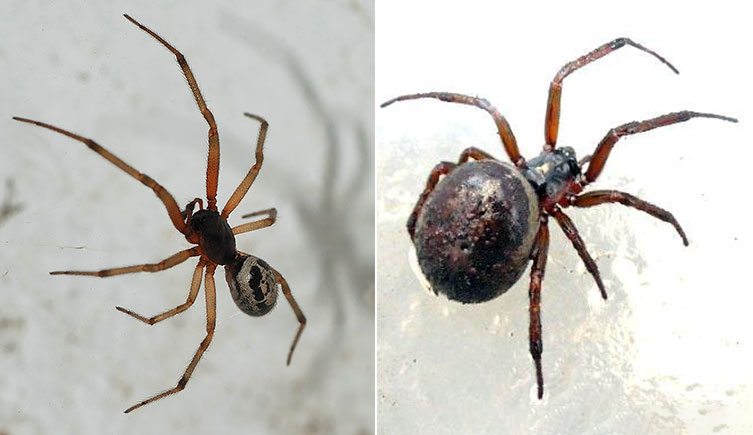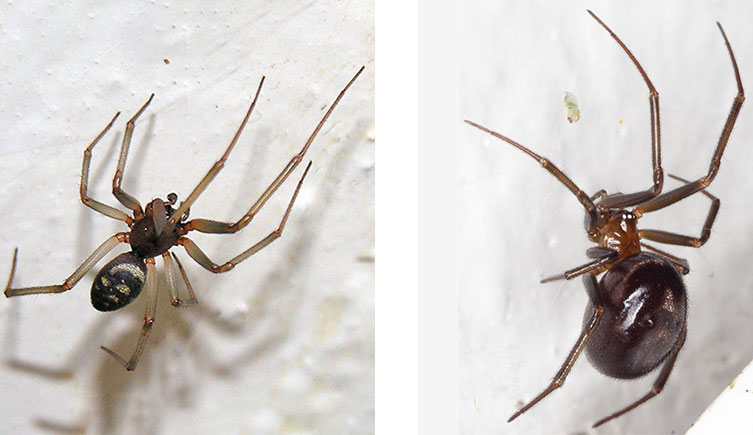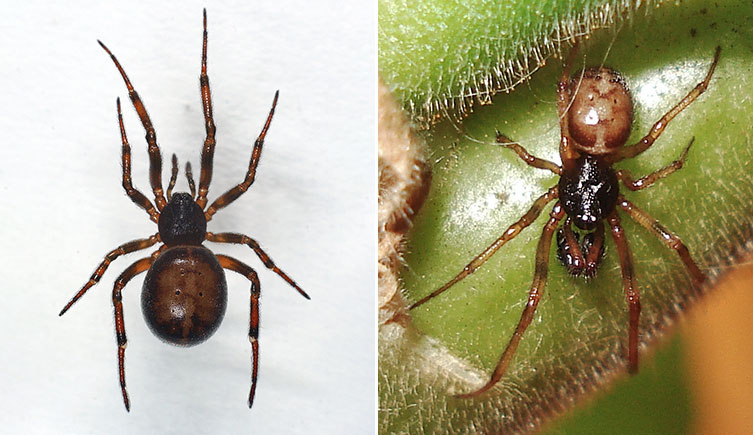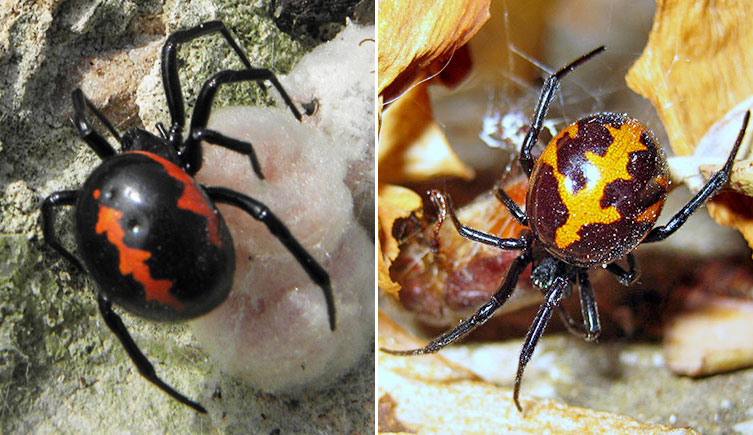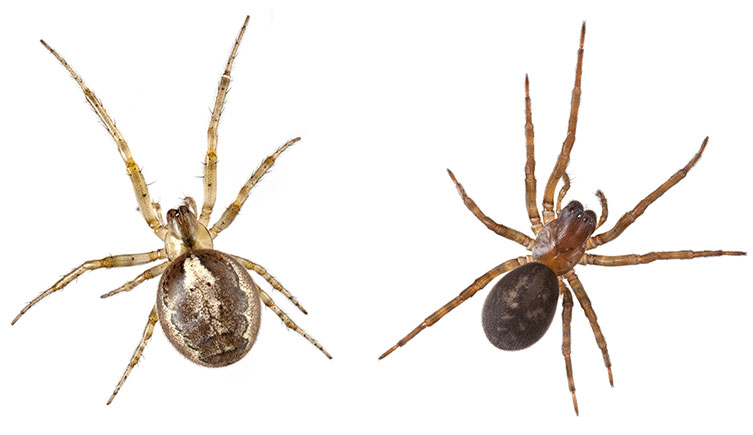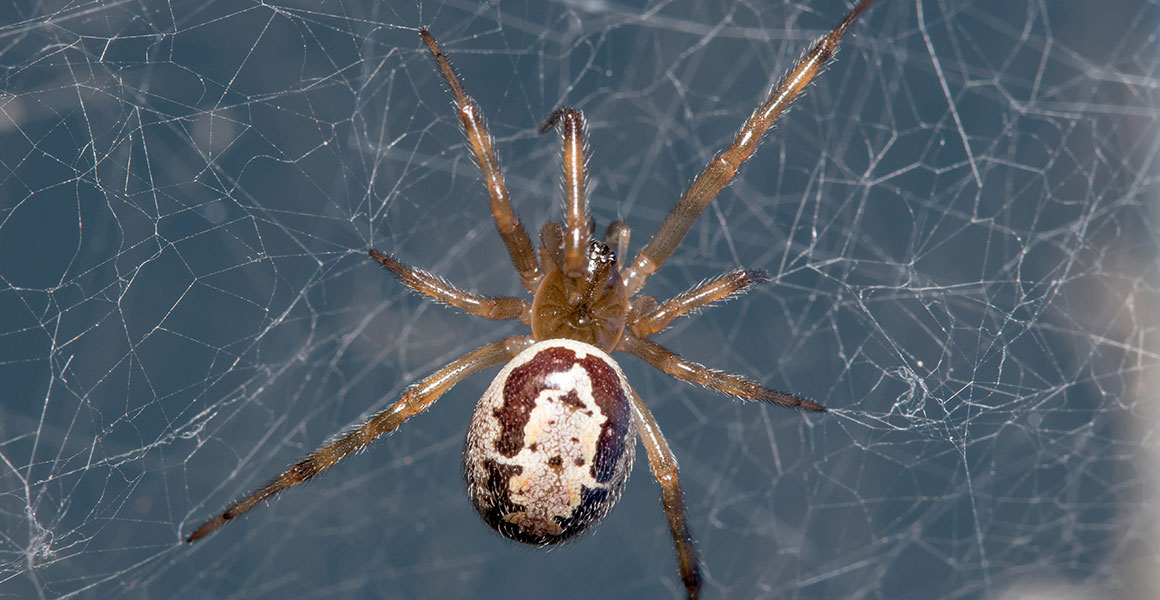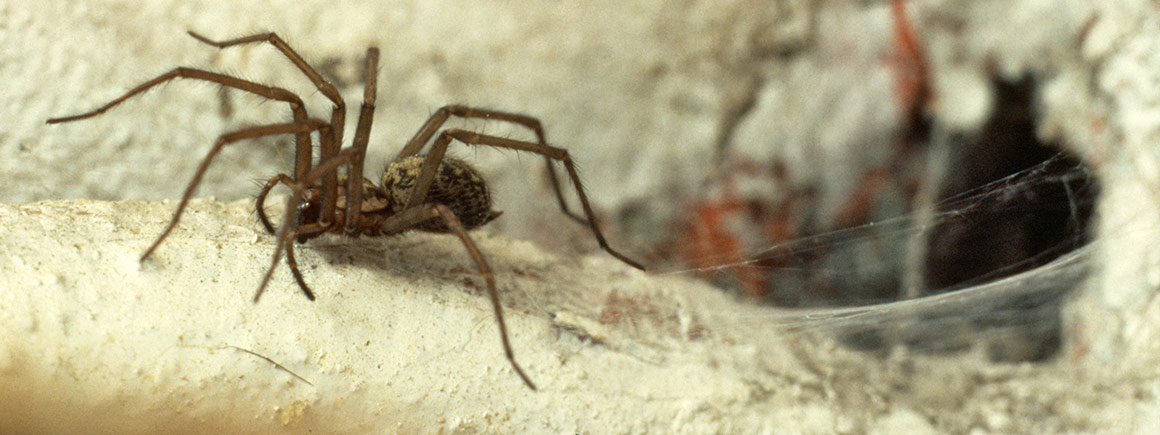The spiders commonly known as false widow spiders belong to the scientific group Steatoda. Because of their general resemblance to the much more notorious black widow spiders (Latrodectus), they can cause concern when found in the UK.
Although they resemble black widow spiders, they are not as harmful. All these spiders are likely to do is give you a small and relatively harmless bite. (See our article How dangerous are false widow spiders?)
There are six species of spiders that live in the UK that are commonly referred to as false widow spiders. Five of these belong to the Steatoda group, along with one close relative:
Steatoda nobilis (the noble false widow)
Steatoda grossa (the cupboard spider)
Steatoda bipunctata (the rabbit hutch spider)
Steatoda albomaculata
Steatoda triangulosa
Asagena phalerata (Mediterranean false widow spider)
An additional species, Steatoda paykulliana, does not live in the UK but is found occasionally as an import in fruit shipments.
